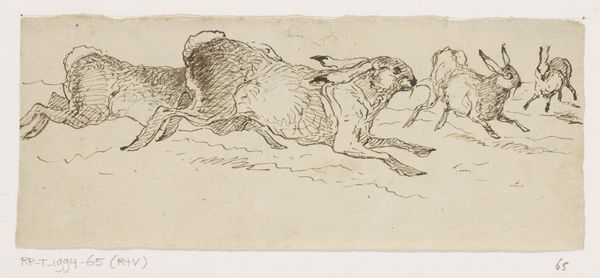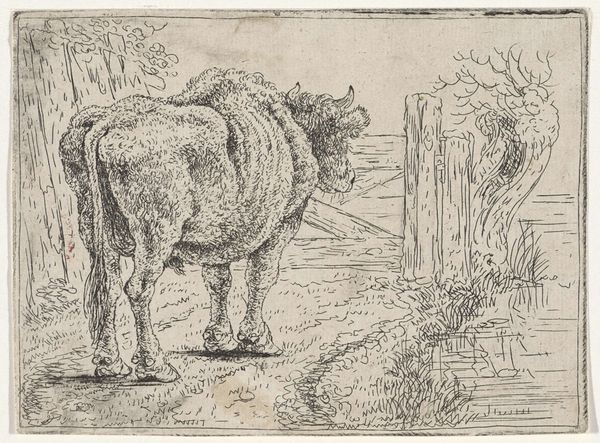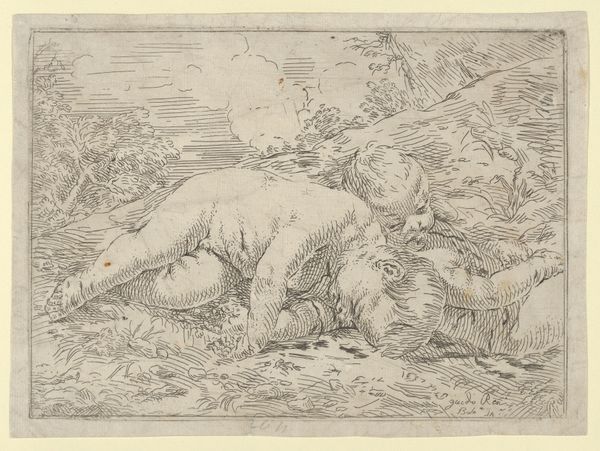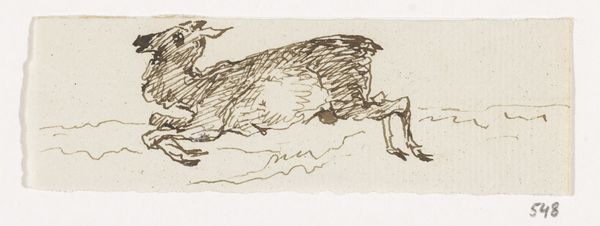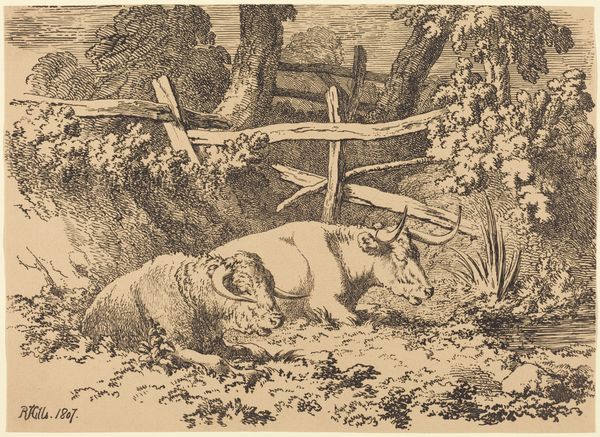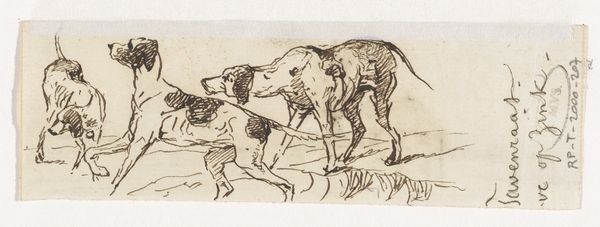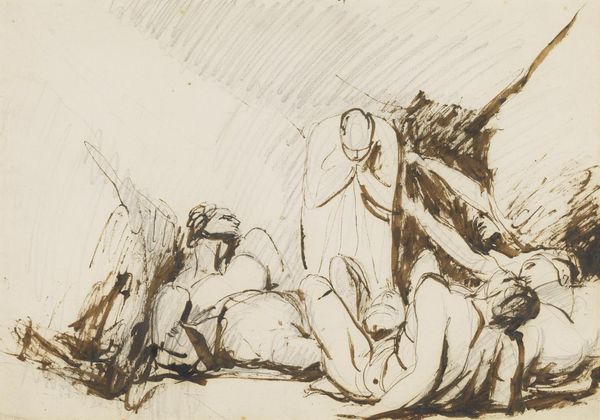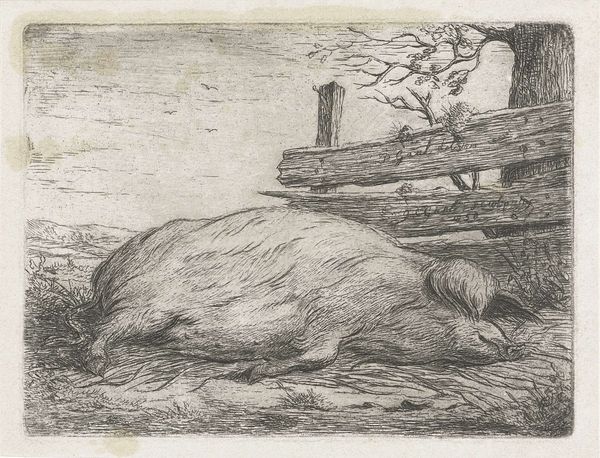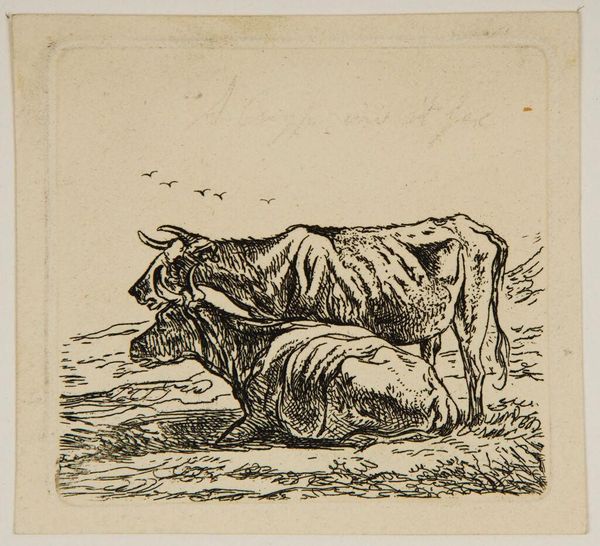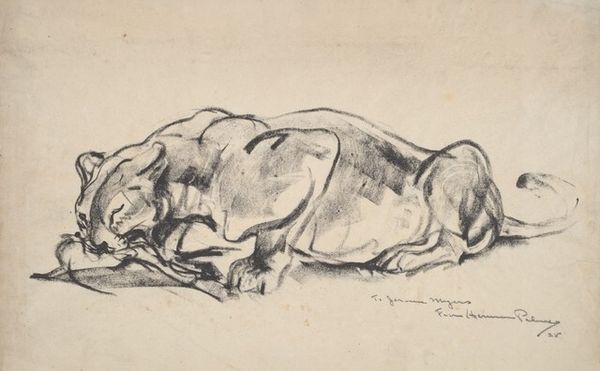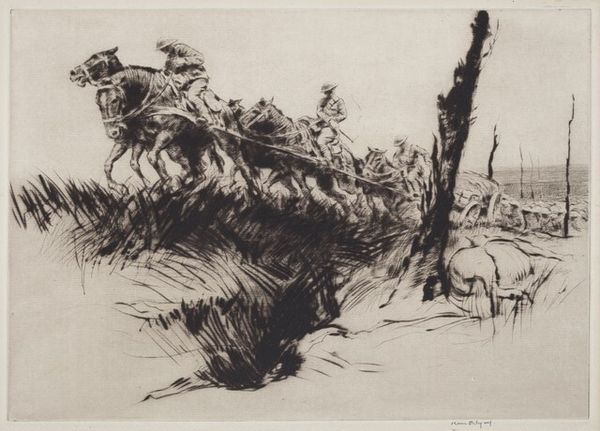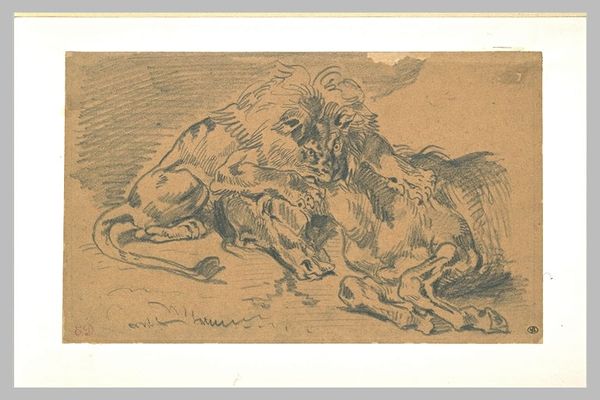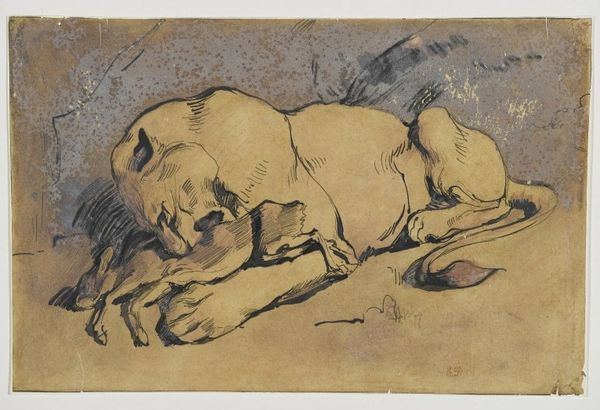
painting, dry-media, ink
#
ink painting
#
painting
#
landscape
#
german-expressionism
#
figuration
#
dry-media
#
ink
#
expressionism
#
mythology
Copyright: Public Domain: Artvee
Editor: So here we have "The Loves of Zeus" by Lovis Corinth, created in 1920 using ink and other dry media. I'm struck by the chaotic energy, even in what looks like a reclining figure in nature. What story do you think Corinth is telling us here? Curator: Oh, Corinth! What a wonderfully tormented soul, wrestling with the classical world through the lens of Expressionism. To me, this piece speaks of transformation. You have Callisto, one of Zeus's unfortunate conquests, morphed into a bear, surrounded by a landscape that mirrors her inner turmoil, perhaps? Editor: A bear? I hadn't picked that up. The figures in the background – are those deer part of the story? Curator: They could be! The deer might represent Diana, the goddess who punished Callisto. Or, more poetically, they might just echo the wild, untamed nature now residing within Callisto herself. Notice how the lines aren’t clean, they’re almost frantic? Editor: Yes, it feels very immediate and raw. It almost looks like Corinth sketched it quickly, trying to get an idea down, a flash of inspiration? Curator: Exactly! This wasn't about smooth, academic perfection. This was Corinth channeling myth to explore inner psychological states. Do you get a sense of melancholy? Editor: Definitely. Now that you mention the rough lines, the bright colors almost don’t make sense with such a heavy topic. Curator: Art often plays with those delicious contradictions! Perhaps Corinth found a bittersweet beauty even in this tragedy, no? Editor: I think so! Thanks for pointing that out, now I am looking at a different artwork. Curator: My pleasure! Always remember that art speaks, it’s simply a matter of finding the right ear to listen.
Comments
No comments
Be the first to comment and join the conversation on the ultimate creative platform.
